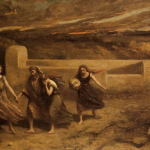Recent stories of note:
“French government adopts bill for restitution of colonial-era objects”
Vincent Noce, The Art Newspaper
The French government has adopted a bill that would provide a pathway for the governments of former colonies to reclaim cultural items that were allegedly plundered or stolen, reports Vincent Noce in The Art Newspaper. Each restitution request would be evaluated by a bilateral scientific community, with final decisions being announced by the Conseil d’État. The items in question would have had to be either stolen, “sold under duress, or given by someone who did not have the authority to do so.” The objects must have been taken between the Vienna Congress of June 1815 and the 1972 UNESCO Convention for the Protection of the World Cultural and Natural Heritage. Cases concerning objects “stolen” post-1972 will be heard in civil court. Currently, Algeria, Benin, Ivory Coast, Madagascar, and Mali all have cases pending.
“The Smithsonian Should Sue but Won’t, the Bayeux Tapestry Shouldn’t Travel but Will”
Brian T. Allen, National Review
As noted in a previous Week in review, the Bayeux Tapestry, the 230-foot-long embroidered textile that dates from the eleventh century and depicts the Norman invasion of England in 1066, is soon to be loaned to the British Museum from France. Not so fast, opines Brian T. Allen in National Review. Allen writes that he’s “all for cultural exchange,” but the tapestry is far too important an artifact and far too fragile to travel. He points out that previous requests from the British Museum had been refused due to the tapestry’s condition, which hasn’t changed. No doubt, the British Museum will make money off exhibiting it, but Allen says that the museum, which itself requires a $1 billion overhaul, is not the right place to care for this delicate specimen from the Middle Ages.
“Bristling with meaning: the language of hair in 19th-century America”
Ian Sansom, The Spectator
What’s in a beard? Quite a lot, it turns out, according to Sarah Gold McBride’s Whiskerology: The Culture of Hair in Nineteenth-Century America. Writing in The Spectator, Ian Sansom assures us that this is no frivolous read, but rather a rigorous contribution to the “emergent field of hair studies.” In the nineteenth century, facial hair, McBride posits, became a social, moral, and political identifier of sorts. McBride traces how the clean-shaved face of the early nineteenth century that signified Enlightenment rationality gave way to robust masculine beards, embodying the emerging pioneer spirit.

















